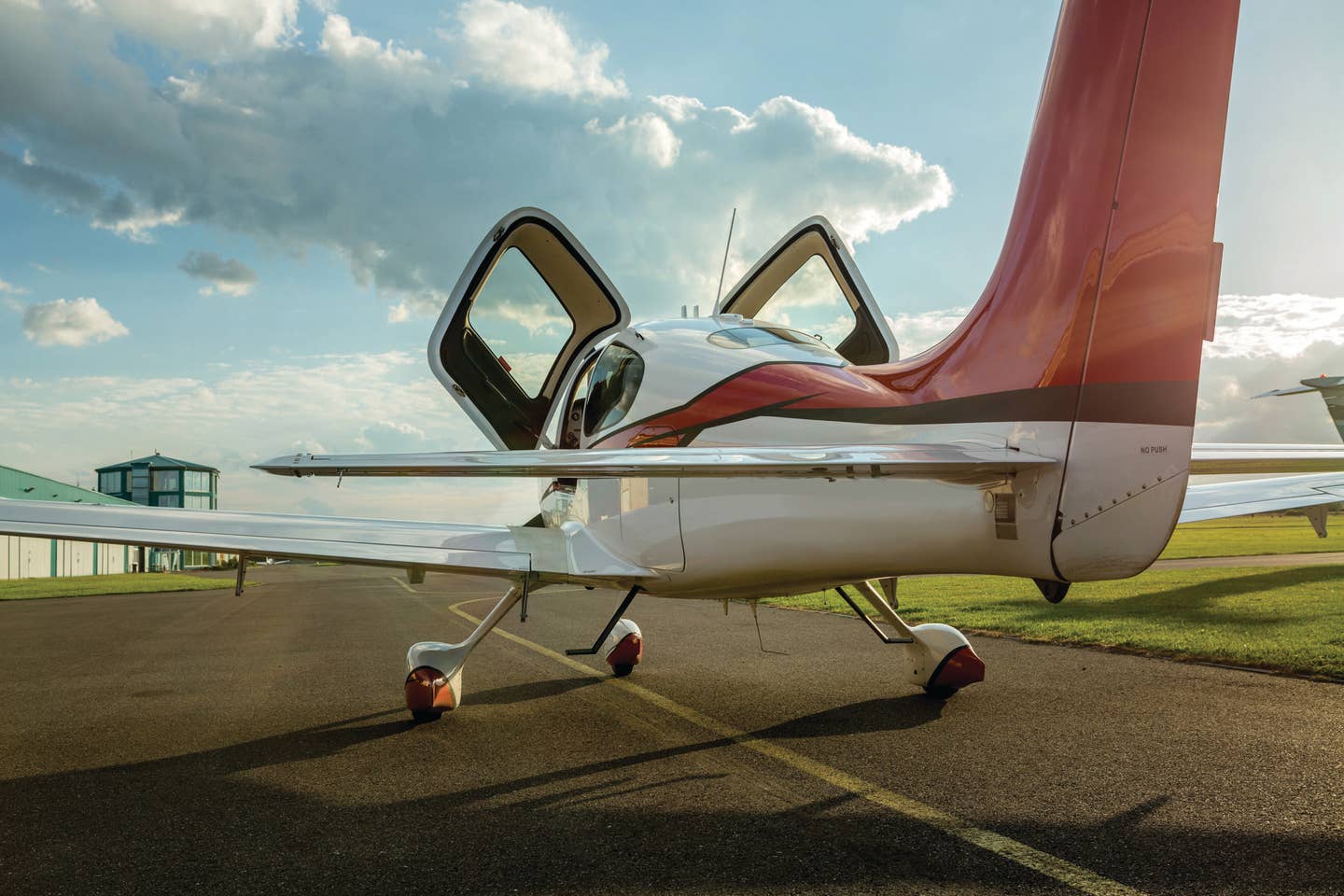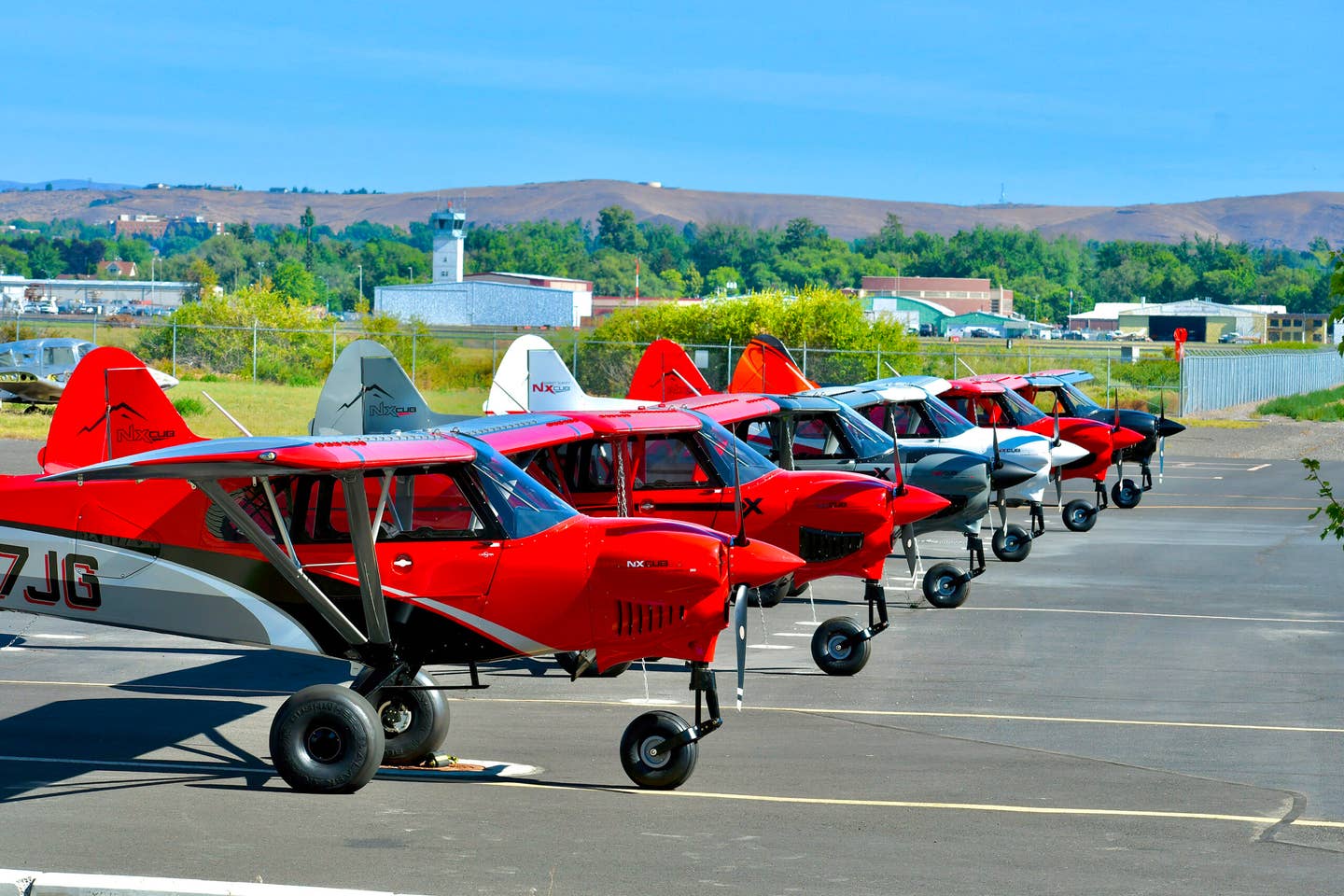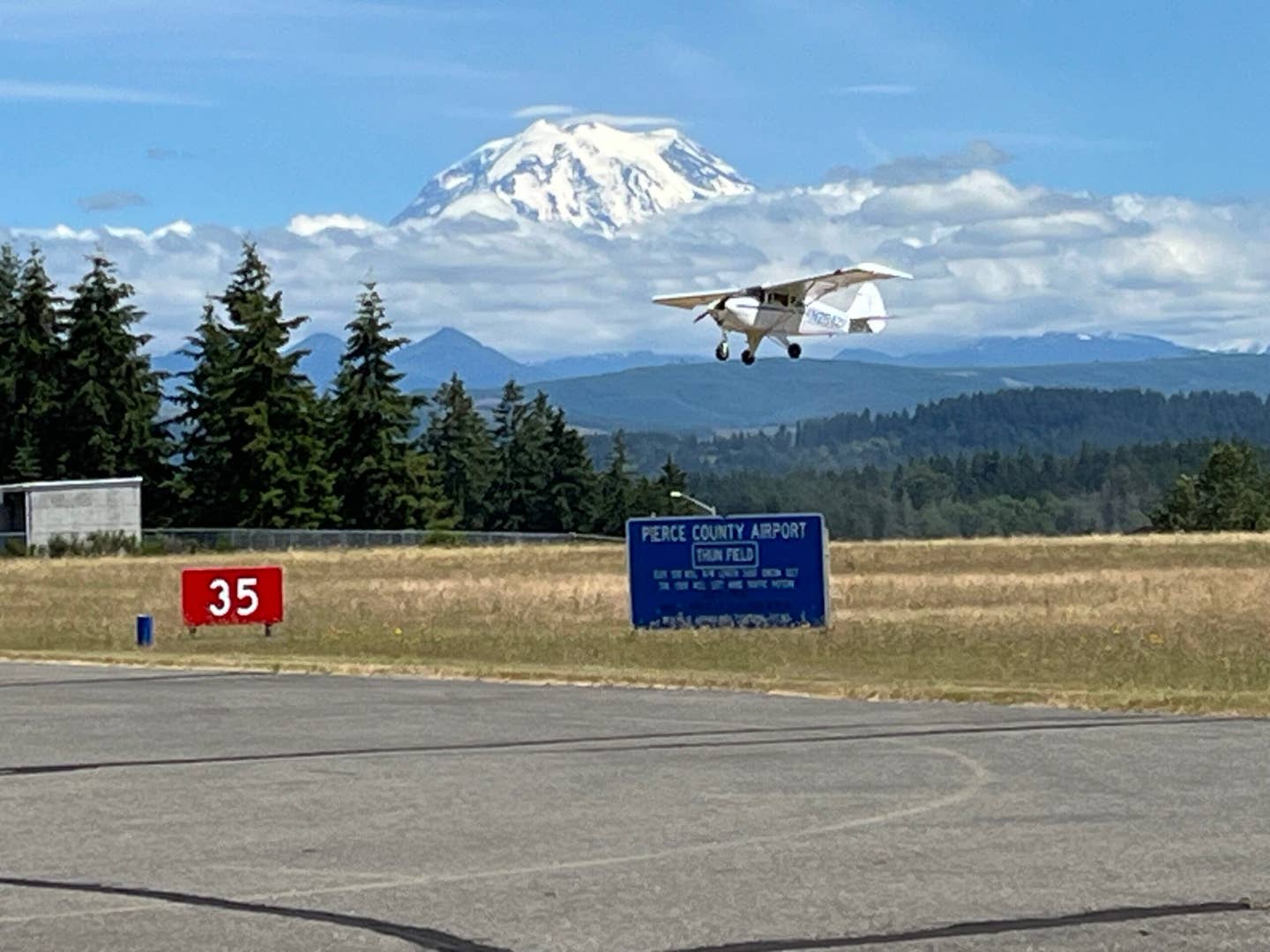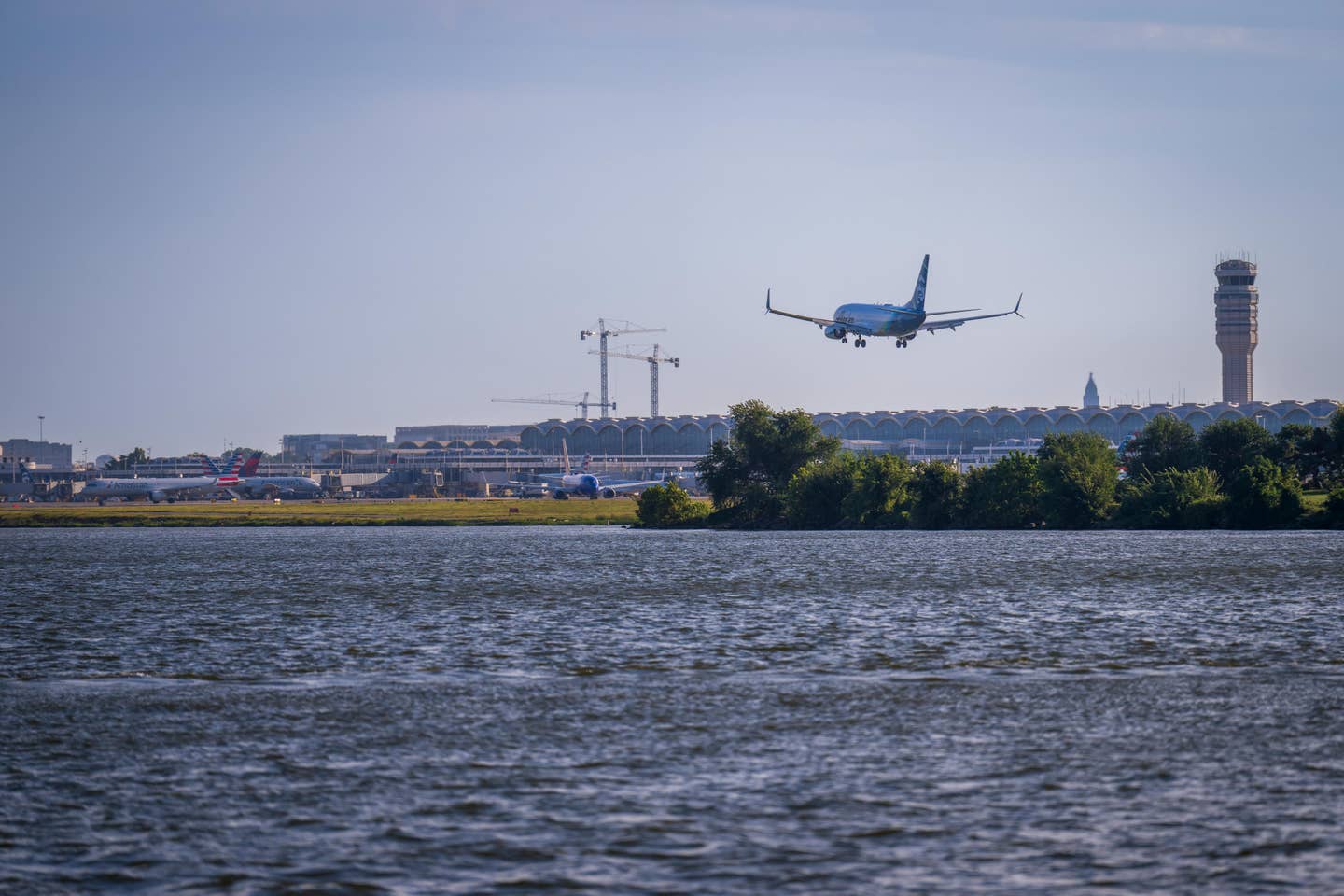A Pilot Races Weather, and Weather Wins
A Navion crash in November 2016 could have been avoided by breaking an old habit.

Ocean County Airport in Toms River, New Jersey. [Courtesy: Ocean County Airport]
In November 2016, two friends, both pilots and airplane owners, flew from their respective homes to meet at Melfa, Virginia, where one of them was building a second house. They stayed overnight at Melfa, and on the next day, a Saturday, flew to Hummel Field (W75), across Chesapeake Bay, for an early dinner. Afterward, they both refueled their airplanes—one had a Cessna 182, the other a Navion— and then took off, the 182 heading back to Melfa, the Navion north to Ocean County Airport (KMJX) at Toms River, New Jersey.
As they flew, the two pilots communicated on 123.45. It was a dark, clear night. The pilot of the 182, on reaching Melfa about 35 minutes after leaving Hummel, attempted an approach but encountered wind shear sufficiently strong that he decided to divert to Salisbury Regional Airport (KSBY), Maryland, where he landed without incident.
Between Melfa and Salisbury, the 182 pilot twice talked with his friend in the Navion. He told him about the strong wind shear he had encountered, which the other acknowledged, and he checked in with him one more time before landing. At that point, the Navion pilot reported that he was at Delaware Bay and all was well.
It did not remain well for long. The scattered wreckage of the Navion was found the next day in a wooded area 16 miles south of KMJX. The pilot had not been in communication with ground facilities, and there had been no distress call. ATC radar, however, had recorded the Navion’s track. Initially heading northeast, probably along V139, it had turned eastward, made two right 360s, then headed erratically eastward again for a mile or so before turning 90 degrees right, then 360 left, then 90 right and 90 right again—all this time wandering in altitude between 2,000 and 200 feet before a final descent that brought it into the trees.
The location coincided with a strong, sharply defined and fast-moving cold front marked by the sudden onset of gusty winds. At the time of the accident — a few minutes after 7 p.m.—Ocean County was reporting clear skies, 5-knot winds and 3 miles visibility in mist. Atlantic City, south of the accident site, reported 8-knot winds then, but 24 gusting to 31 half an hour later. Millville, New Jersey, where the Navion would first have encountered the edge of the cold front, reported a 41-knot gust some time after the accident. Numerous pilot reports of moderate turbulence, and a few of severe turbulence, were received from behind the front.
The Navion pilot, a Harley-riding 75-year-old, did not have an instrument rating. He reported 800 hours total time on his application for a third-class medical certificate in 2015. He had owned the airplane, a 1949 A model painted in faux military colors, since 2006. A photograph of the cockpit, included in the online public accident docket, shows a panel little changed since its manufacture and much scarred by time, like an old and beloved pair of slippers. The pilot, his friend told accident investigators, “usually did not talk to air traffic controllers (unless he was required to) or flight service, and preferred to obtain weather information from [his] Garmin Pilot app.”
While they were having dinner, the 182 pilot told accident investigators, he called Flight Service. The abbreviated briefing he obtained did not include any adverse weather for his trip back to Melfa, but he also inquired, on his friend’s behalf, about the weather on the way to Ocean County. He learned that it was going to “become bad” between 1900 and 1930, and he passed the information on to his friend, suggesting that he stay over another night. The Navion pilot, although he had no pressing reason to return home, declined. He was not concerned about the front, he said, because “his time en route was only one hour 20 minutes.” He must have thought that he would reach the Ocean County area before the bad weather got there. As it turned out, they arrived at practically the same time.
Exactly what flight conditions the Navion pilot encountered, and how they affected him and his airplane, cannot be known. The Navion had a low wing-loading even at its gross weight of 2,850 pounds; with just the pilot aboard, it could have been tossed around quite violently in even moderate turbulence. All of the current pilot reports of moderate and severe turbulence came from airplanes that were heavier than the Navion, and would therefore have been less strongly affected by turbulence.
The accident took place over unlighted terrain, and the pilot was flying low, so the lights along the nearby coastline and Garden State Parkway might not have been so prominent as they would have appeared from higher up. Visibility may have been hampered by mist. He might have become disoriented. There might have been an incapacitating or distracting medical event that did not show up in the autopsy, which laconically noted the cause of death as “multiple injuries.” It may or may not be relevant that he had lost his wife of 55 years eight months earlier. Something, at any rate, caused him to begin flying in circles, climb and descend seemingly at random, and ultimately fly into the trees.
The National Transportation Safety Board attributed the accident to “the pilot’s inadequate preflight weather planning and in-flight weather evaluation, which resulted in an encounter with a strong cold front and the pilot’s subsequent loss of airplane control.”
One aspect of the situation made the timing of his arrival and that of the front particularly critical: geography. His route led him into a narrowing corridor between the advancing front and the inhospitable Atlantic Ocean. The farther he went, the fewer his options became.
It’s a rare pilot who pays no attention to the weather at all. The area forecast discussion, readily available online, correctly predicted winds of 40 knots along the front, and might have given the pilot pause had he read it. On the other hand, the terminal forecast for Atlantic City, 33 miles south of Ocean County, called for only 13 knots at his expected time of arrival. It was not altogether unreasonable, therefore, to take an optimistic view of the prospects for the flight.
I can sympathize with the pilot’s dislike of communicating with aviation officialdom. Flying for recreation in a beloved old airplane can be a solitary delight, unwelcoming to third parties. But if there was even a chance of bad weather ahead, should he not have broken his habitual radio silence to find out a little more about it?

Sign-up for newsletters & special offers!
Get the latest FLYING stories & special offers delivered directly to your inbox






